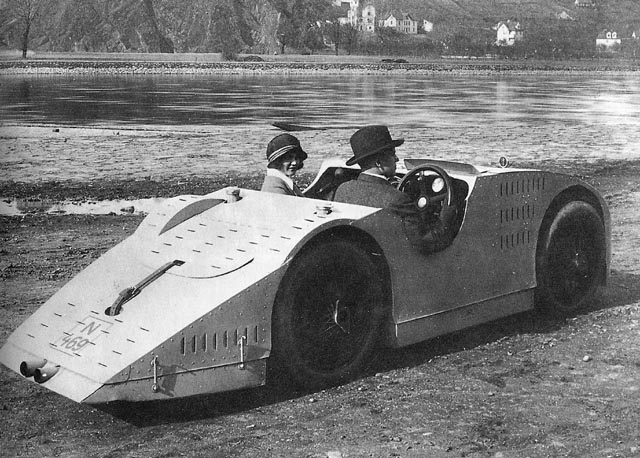

Editor: Jaap Horst



|
That wasn’t a problem for Eliška, who had taken to driving as
easily as she had taken to languages. She had exceeded her
husband’s skill level by 1926 and was the one competing
against the top drivers in the continent. Part of that stemmed from her attention to detail. Eliška is credited as being one of the first drivers to walk the race courses she’d be driving on in order to determine the best lines and reference landmarks. She spent the entire month before the Targa Florio in Sicily making careful notes on each of the 1500 corners. All that effort paid off; she ran in fourth place until her steering failed, nearly sending her off a cliff—but none of her detractors could claim that she didn’t have the endurance to complete the 67-mile event. She seemed unstoppable. On she went to German GP at the Nürburgring, where she secured a victory in the two-liter class. That set her in the record books as the first woman to ever win a Grand Prix—and at one of the world’s most renowned tracks as well. While many other female racers of the era were encountering resistance, Junek was well-loved by most everyone. The overall winner of the Nürburgring event, Otto Merz, was so pleased by her performance that he even pulled her into a mighty bear hug that broke two of her ribs. To make herself more appealing to the public, she Anglicized her name to the easily-pronounceable Elizabeth Junek. It looked as though she was on the fast track to making a name for herself so firmly embedded in the history books that she was sure never to be forgotten.
1928 was a defining year for the Juneks. Eliška purchased yet another Bugatti, this time a Type 35B Grand Prix, a light car that was nimble but uncomfortable to drive due to its rigid axles. It didn’t make for an easy drive through the Sicilian mountains for that year’s Targa Florio—but that didn’t stop Junek from putting what would become the best performance of her career. Motorsport Magazine lays out all the details: Eliška took second place at the start of the second lap around the 67-mile course, ahead of legendary drivers such as Louis Chiron, Luigi Fagioli, and René Dreyfus. She held her position as she started the final of five laps, just one minute behind the leader. It seemed that she was destined for a massively impressive finish… until she struck rocks in the road that hadn’t been there on the previous lap. She suffered a puncture followed by a failing water pump and slipped back to fifth. She was still less than nine minutes behind the leader after a grueling seven hour race.
In July, she and Cenek teamed up for the the German GP, eager to secure a solid result as a couple. After swapping positions with her husband, Cenek veered off the race course, struck a tree, and was instantly killed. Eliška was heartbroken and entirely disillusioned with racing. She sold off all of their cars and turned back to her first love, traveling. Ettore Bugatti gave her a touring car to use for her travels and enlisted her to help find export opportunities in other countries as a token of appreciation for a driver who had given his cars so much positive attention.
But, although her name may have slowly been lost as the years passed by, Eliška Junková still proved to young women of her era that if she could race, then so could they. It’s impossible to say exactly how many young girls might have been influenced by Junková’s success, but she recognized that she had proved that women were just as capable of competing alongside men—an important feat for a woman of the jazz age. Eliška Junková passed away peacefully in Prague in 1994 at the age of 93, inspiring another look at the first woman to win a Grand Prix. Right: Eliška Junková in 1963 at Silverstone |

Junek depicted in the 1928 Targa Florio

Another take on Eliška Junková in the 1928 Targa Florio, this time by Steven Massey
(Acrylic, 1993)